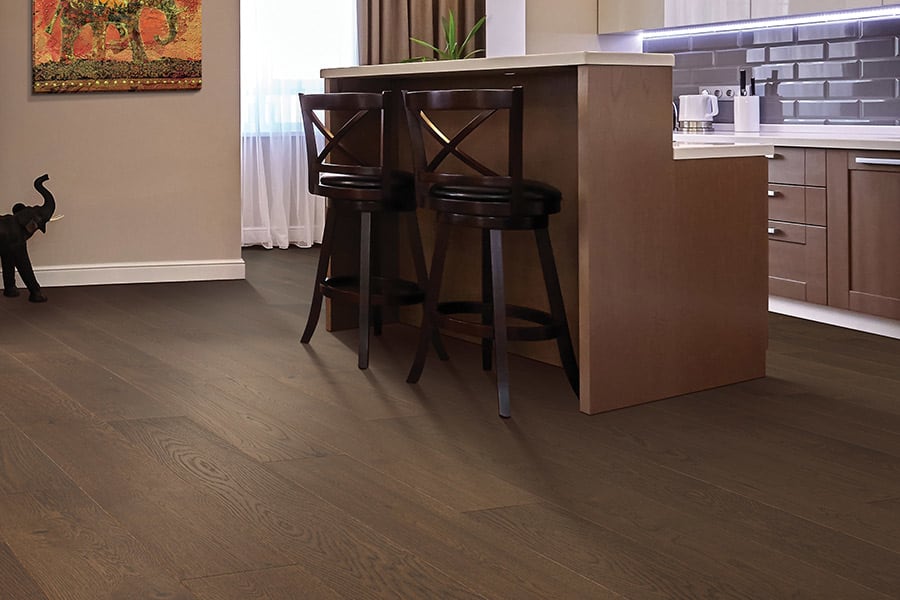Considering hardwood flooring? Here’s what you should know
A lot of homeowners consider wood flooring to be a "must-have" item. Oak, cherry, walnut, hickory, or maple floors lend warmth and charm like none other, and whether it's strip, parquet, or plank, they're sure to raise property values and draw prospective buyers. There’s a lot more to selecting it than choosing a hardwood species; here are some facts to help you find the best one for you.
There’s a version of hardwood that's more stable.
For years, people's minds automatically went to solid when they heard the word "hardwood," and if water and moisture issues are a concern, you may want to explore engineered wood flooring. It's currently taking a significant share of the wood flooring industry because it appeals to those who wish to both beauty and practicality.
Unlike solid, which is one thickness throughout the plank, engineered is layered. The top is a slice of genuine species with all the undertones, grains, and swirls we expect. Underneath are three or more authentic wood layers combined with a little resin and placed in a crosswise position. It can be installed in some higher-than-normal places where solids are not recommended, and it's less prone to warping.
Engineered floors offer an additional installation technique, the floating floor. Pieces click together, then hover over the subfloor. No nails or glue are required, and the subfloor only needs to be clean, dry, and level.
Unlike solid, which is one thickness throughout the plank, engineered is layered. The top is a slice of genuine species with all the undertones, grains, and swirls we expect. Underneath are three or more authentic wood layers combined with a little resin and placed in a crosswise position. It can be installed in some higher-than-normal places where solids are not recommended, and it's less prone to warping.
Engineered floors offer an additional installation technique, the floating floor. Pieces click together, then hover over the subfloor. No nails or glue are required, and the subfloor only needs to be clean, dry, and level.
Request an estimate
Think about thickness
This determines, for both solid and engineered, the number of times a floor can be sanded. Ideal for solid is ¾-inch, and it can be sanded up to six times. Engineered ranges from ⅝-inch to ½-inch, and it can be sanded up to five times.
Consider species
Domestics are harvested within the US, while exotics come from Indonesia, South America, and Africa. Hickory is the hardest domestic and often has wider planks and grains that create swirls. Domestics feature colors that are light and whitewashed, medium, and dark tones. Exotics are always dark, more dramatic, and always very hard.
If you’re in the market for hardwood flooring, let our experts advise you on selecting the best one for your needs. Homeowners in Tallahassee, FL, Thomasville, GA, Crawfordville, FL, Woodville, FL, and Havana, FL can visit the Luke Van Camp's Floors & More showroom in Tallahassee, FL. We are happy to give you your free hardwood flooring quote.
If you’re in the market for hardwood flooring, let our experts advise you on selecting the best one for your needs. Homeowners in Tallahassee, FL, Thomasville, GA, Crawfordville, FL, Woodville, FL, and Havana, FL can visit the Luke Van Camp's Floors & More showroom in Tallahassee, FL. We are happy to give you your free hardwood flooring quote.












